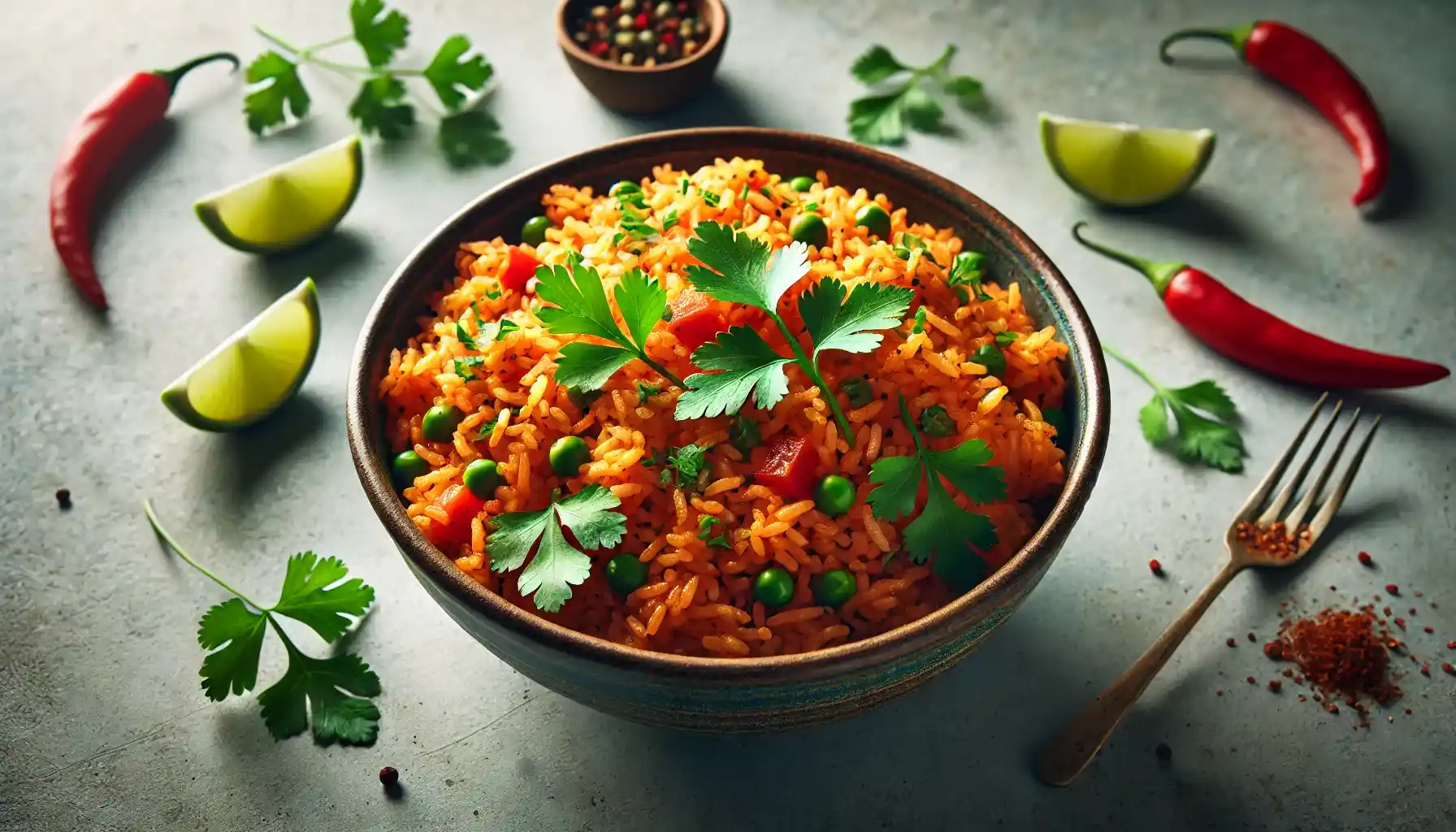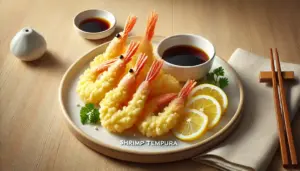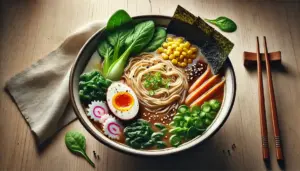Mexican Rice, also known as Arroz Rojo (Red Rice) or Spanish Rice, is a staple in Mexican cuisine. Its rich, vibrant red-orange color, fluffy texture, and mild yet flavorful seasoning make it a perfect side dish for a variety of Mexican meals. This aromatic and slightly spiced rice dish is often served alongside tacos, enchiladas, and beans, bringing warmth and color to the table. In this article, we’ll explore the origins of Mexican Rice, its nutritional profile, health benefits, variations, and a step-by-step guide to creating the perfect Mexican Rice at home.
The Origins of Mexican Rice
Although commonly called “Spanish Rice” in the United States, Mexican Rice has no direct link to Spain. The name likely originated as Spanish colonizers brought rice to Mexico in the 1500s, influencing the local cuisine. The rice was incorporated into Mexican dishes and became a staple grain, adapted with native spices, herbs, and tomatoes.
Mexican Rice, also referred to as Arroz a la Mexicana, is typically cooked with onions, garlic, and tomatoes, which give it its signature color and flavor. This method of cooking rice is common throughout Latin America, with regional adaptations making it unique to each country. In Mexican culture, rice is often seen as a comfort food, enjoyed at family gatherings and celebrations.
Nutritional Profile of Mexican Rice
Mexican Rice is a satisfying and nutritious side dish, especially when made with whole, natural ingredients. While rice itself is primarily a carbohydrate, adding vegetables and spices can increase its nutritional value. Here’s an approximate nutritional breakdown for one cup of homemade Mexican Rice (about 200 grams):
- Calories: 215 kcal
- Carbohydrates: 40g
- Protein: 4g
- Fat: 4g
- Fiber: 2g
- Vitamin C: 8 mg (13% of the Daily Value)
- Vitamin A: 500 IU (10% of the Daily Value)
- Potassium: 220 mg
- Iron: 1 mg (5% of the Daily Value)
- Sodium: 400 mg (varies based on added salt)
Health Benefits of Mexican Rice
- Energy Boosting Carbohydrates: Rice is a primary source of complex carbohydrates, which provide a steady release of energy throughout the day.
- Rich in Antioxidants: Tomatoes, often used in Mexican Rice, contain lycopene and vitamin C, both of which act as antioxidants, helping protect the body from free radicals.
- Good Source of Vitamins: Mexican Rice, with added vegetables like tomatoes and bell peppers, provides vitamins A and C, which support immune health and vision.
- Low in Fat: When prepared with minimal oil, Mexican Rice is a low-fat dish, making it a healthy option when paired with lean proteins and veggies.
- High in Fiber: Adding vegetables to rice increases fiber content, supporting digestive health and promoting a feeling of fullness.
Traditional Mexican Rice Recipe
Here’s a traditional Mexican Rice recipe that captures the authentic flavors of this beloved dish. This recipe is easy to follow and perfect as a side dish for tacos, fajitas, enchiladas, or any Mexican-inspired meal.
Ingredients:
- Long-grain white rice: 1 cup
- Fresh tomatoes: 2 large, chopped (or 1 cup canned diced tomatoes)
- Onion: 1 small, finely chopped
- Garlic: 2 cloves, minced
- Vegetable or chicken broth: 2 cups (low-sodium if preferred)
- Tomato paste: 1 tablespoon (optional, for deeper color)
- Vegetable oil: 2 tablespoons
- Salt: 1/2 teaspoon (adjust to taste)
- Cumin: 1/2 teaspoon
- Fresh cilantro: for garnish (optional)
Cooking Steps:
- Prepare the Tomato Puree: In a blender, blend the chopped tomatoes until smooth. This should yield about 1 cup of tomato puree. Set aside.
- Toast the Rice: In a medium-sized skillet, heat the vegetable oil over medium heat. Add the rice and cook, stirring frequently, until the rice turns golden brown. Toasting the rice adds depth of flavor and prevents it from becoming mushy.
- Add Aromatics: Add the chopped onion and minced garlic to the pan with the rice. Sauté for another 2 minutes until the onions are translucent and fragrant.
- Incorporate the Tomato Puree and Spices: Pour in the tomato puree and add the cumin, tomato paste, and salt. Stir well, letting the mixture cook for a few minutes until slightly thickened.
- Add the Broth and Simmer: Pour the vegetable or chicken broth into the pan, stirring to combine. Bring the mixture to a gentle boil, then reduce the heat to low, cover, and simmer for 15–20 minutes or until the rice is tender and the liquid is absorbed.
- Fluff and Serve: Once the rice is cooked, remove it from heat and let it sit, covered, for an additional 5 minutes. Fluff the rice with a fork, garnish with chopped cilantro if desired, and serve warm.
Tips for the Perfect Mexican Rice
- Use Long-Grain Rice: Long-grain rice is ideal for Mexican Rice, as it stays separate and fluffy rather than sticky.
- Toast the Rice: Toasting the rice in oil until golden enhances the flavor and prevents it from sticking.
- Use Fresh Ingredients: Fresh tomatoes provide a vibrant color and natural sweetness, but canned tomatoes can also be used for convenience.
- Avoid Lifting the Lid: While cooking, avoid lifting the lid, as this releases steam and can interfere with the cooking process.
- Let It Rest: Allow the rice to rest after cooking to ensure it’s fully absorbed any remaining liquid and has a fluffy texture.
Variations of Mexican Rice
Mexican Rice is versatile and can be adapted with different ingredients to suit various tastes and dietary needs. Here are some popular variations:
- Vegetable Mexican Rice: Add diced bell peppers, peas, and carrots to make the dish more colorful and nutritious.
- Mexican Brown Rice: Use brown rice instead of white rice for added fiber and nutrients. Adjust the cooking time, as brown rice takes longer to cook.
- Spicy Mexican Rice: Add finely chopped jalapeños or a dash of chili powder for a spicier version. Perfect for those who love a kick of heat!
- Mexican Cauliflower Rice: For a low-carb option, substitute cauliflower rice for regular rice. Reduce the cooking time since cauliflower cooks much faster.
- Cheesy Mexican Rice: Stir in shredded cheese during the last few minutes of cooking for a creamy, cheesy twist. This version pairs well with grilled meats or beans.
Creative Ways to Serve Mexican Rice
Mexican Rice is traditionally served as a side, but here are some innovative ways to enjoy it:
- Burrito Bowls: Use Mexican Rice as a base for a burrito bowl, adding black beans, grilled chicken, guacamole, and salsa for a hearty meal.
- Stuffed Peppers: Mix Mexican Rice with ground meat, cheese, and spices, then stuff the mixture into bell peppers and bake until tender.
- Rice and Bean Casserole: Combine Mexican Rice with black or pinto beans, cheese, and spices in a casserole dish. Bake until bubbly for a delicious, filling meal.
- Mexican Rice Salad: Turn leftover Mexican Rice into a salad by adding diced vegetables, avocado, corn, and a squeeze of lime.
- Rice-Stuffed Tacos: Use Mexican Rice as a filling for soft or hard tacos along with your favorite toppings.
Fun Facts About Mexican Rice
- Not from Spain: Despite being called “Spanish Rice” in some places, Mexican Rice is a distinct dish and not from Spain.
- A Symbol of Mexican Culture: Rice in Mexican cuisine is often a symbol of comfort and tradition, frequently served at family gatherings and celebrations.
- Adaptable for All Diets: Mexican Rice can easily be made vegan, vegetarian, or gluten-free, making it accessible for various dietary preferences.
- Rich in History: Mexican Rice has been part of the Mexican diet for centuries, influenced by both indigenous cooking and Spanish colonization.
Healthier Alternatives and Modifications
While traditional Mexican Rice is delicious, here are some tips to make it even healthier:
- Opt for Brown Rice: Using brown rice instead of white rice adds fiber, vitamins, and minerals.
- Limit the Salt: Use low-sodium broth or reduce the amount of salt for a heart-healthier dish.
- Add More Vegetables: Incorporating additional vegetables like zucchini, corn, or peas adds nutrients and fiber.
- Reduce the Oil: Use less oil for toasting the rice or switch to a healthier oil, such as olive oil, to reduce saturated fat content.
Conclusion
Mexican Rice, or Arroz Rojo, is a versatile and flavorful dish that adds warmth and color to any meal. Whether served as a side dish or incorporated into creative recipes like burrito bowls or stuffed peppers, Mexican Rice is beloved for its simplicity, flavor, and adaptability. With its rich history and cultural significance, it’s a classic recipe that has been enjoyed by generations and continues to be a favorite worldwide.
Making Mexican Rice at home is straightforward and can be tailored to suit any taste, from mild and
comforting to spicy and bold. Its nutritional benefits, especially when enhanced with vegetables and whole grains, make it a healthy addition to any meal. So the next time you’re planning a Mexican-inspired meal, consider this delicious rice dish as the perfect accompaniment!




